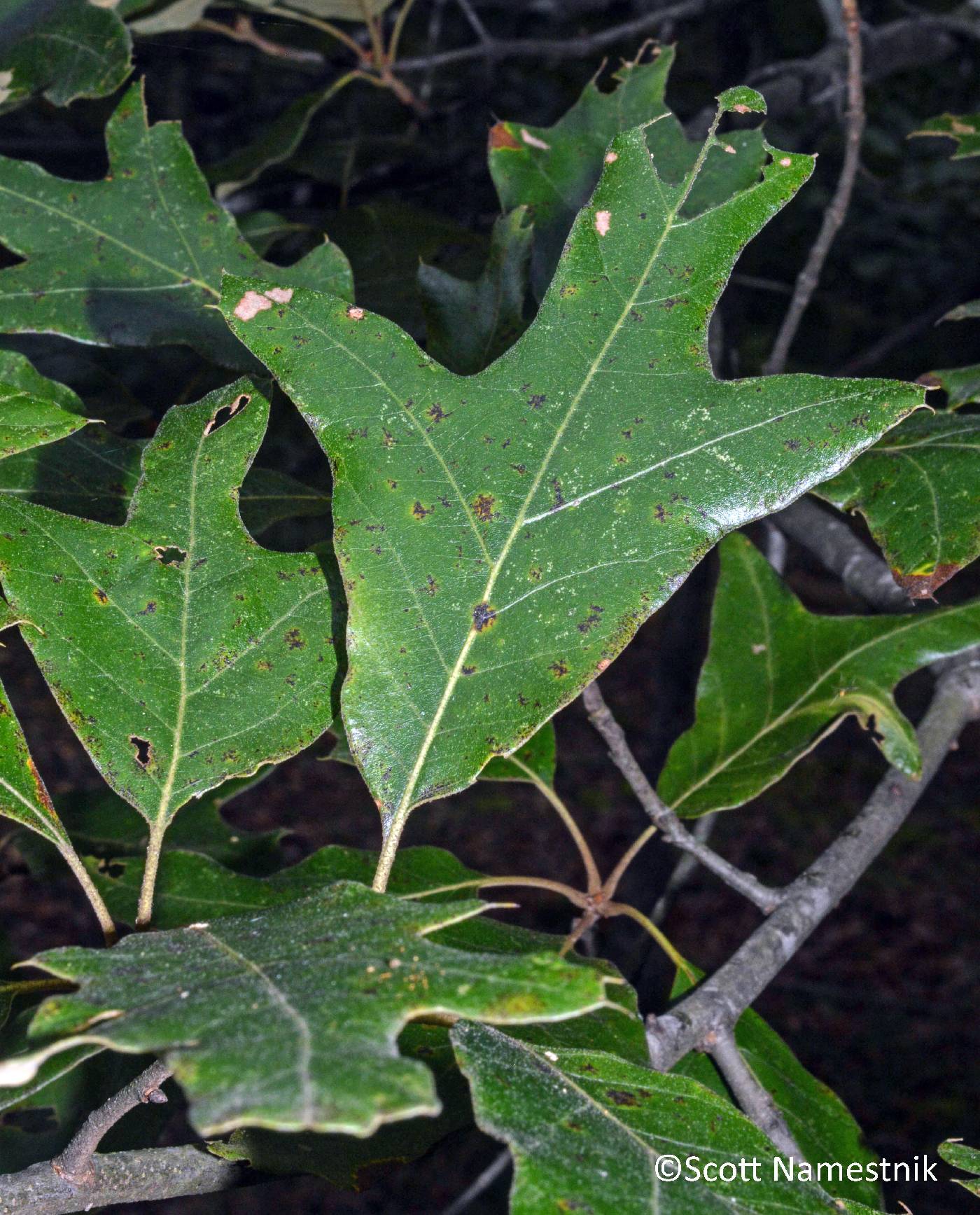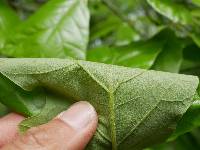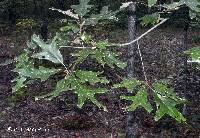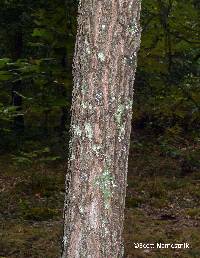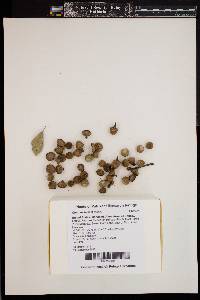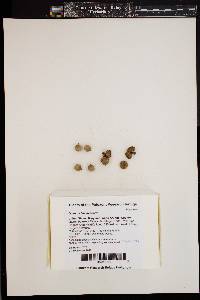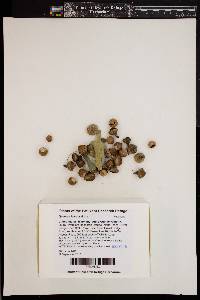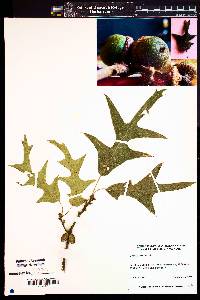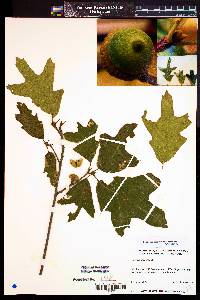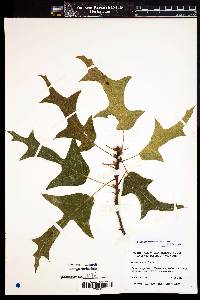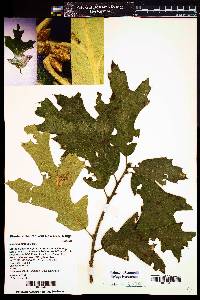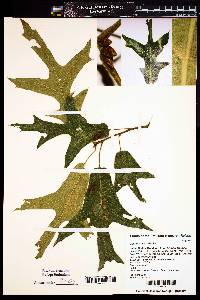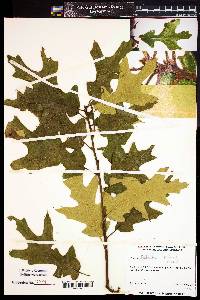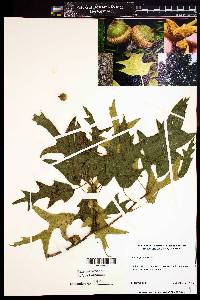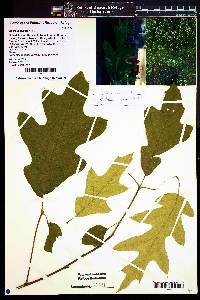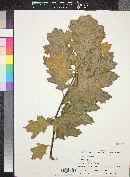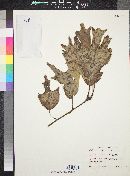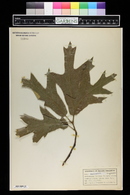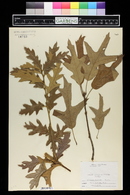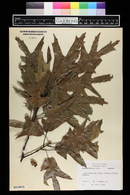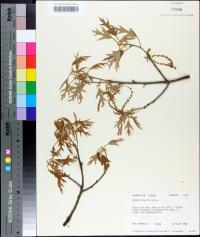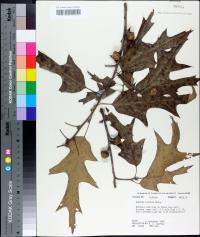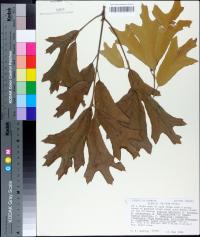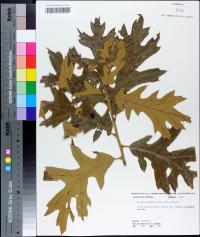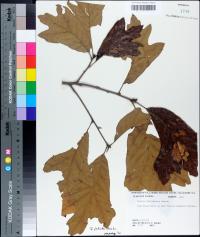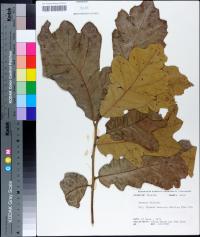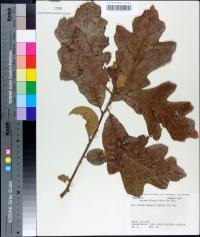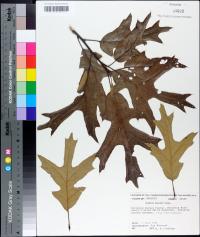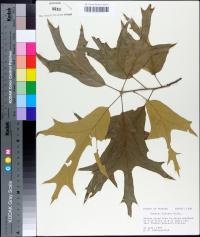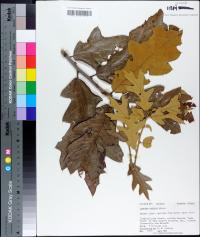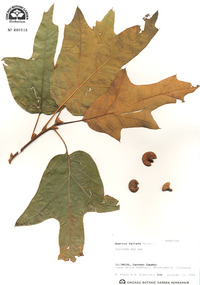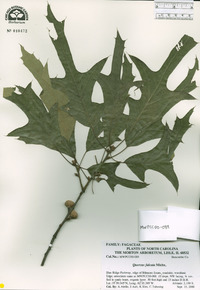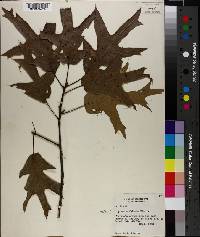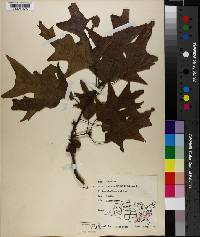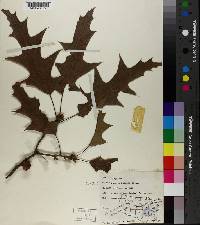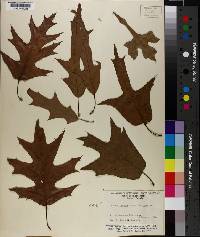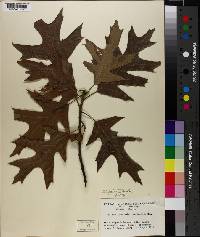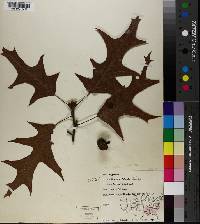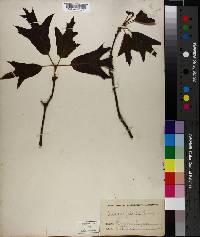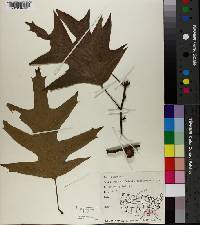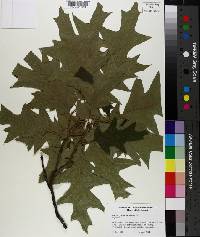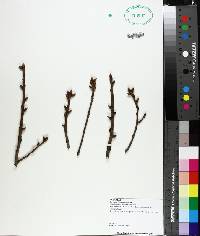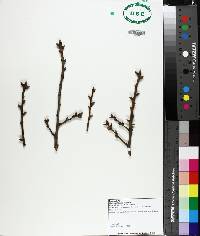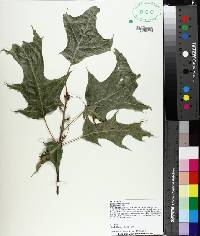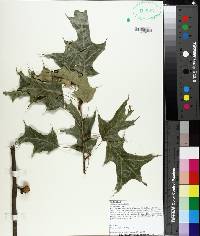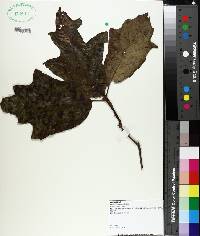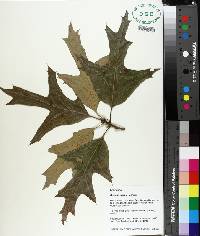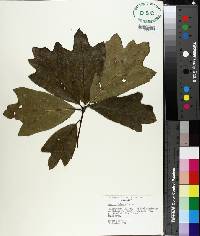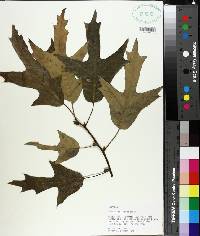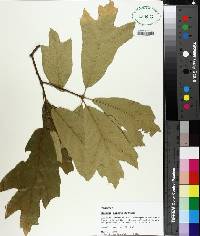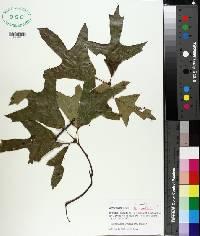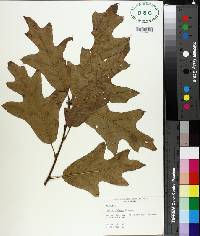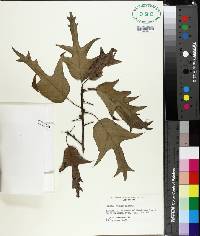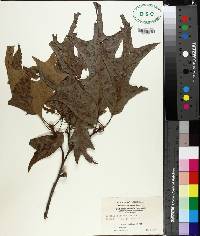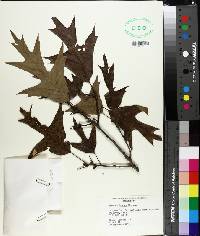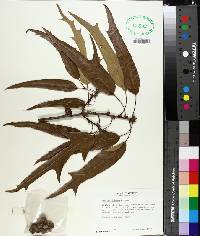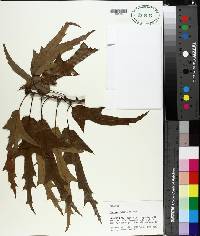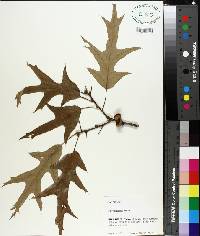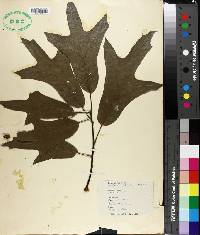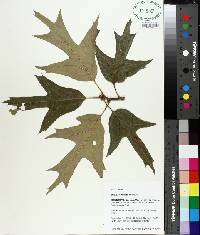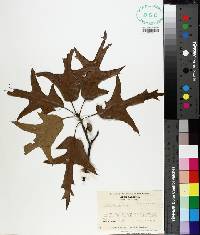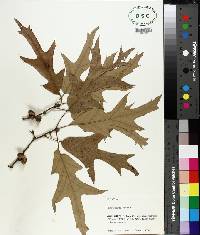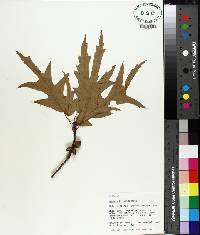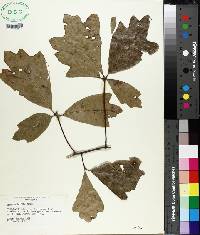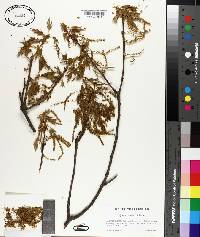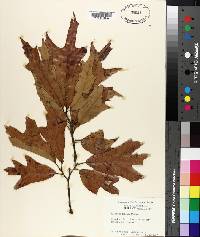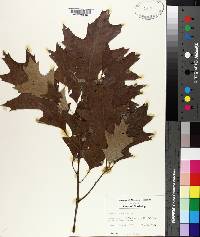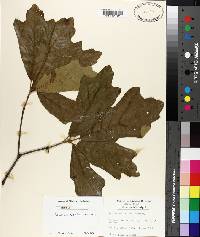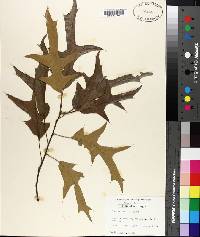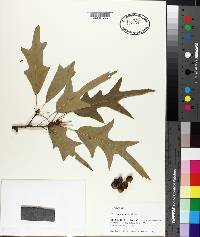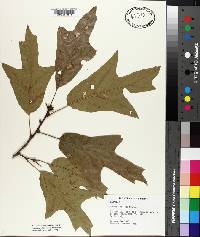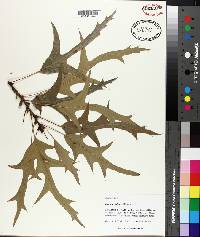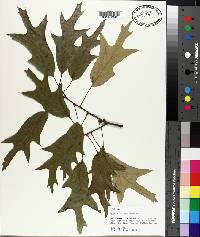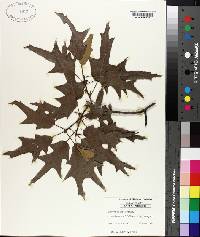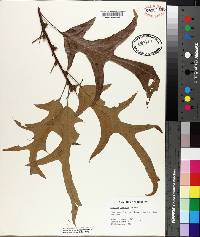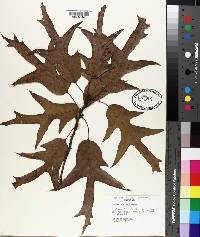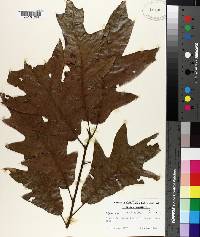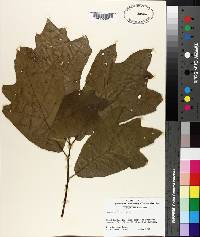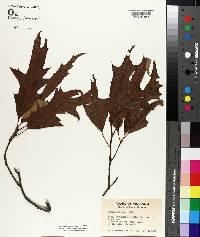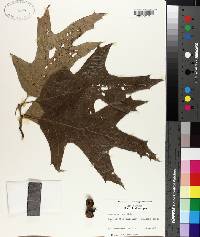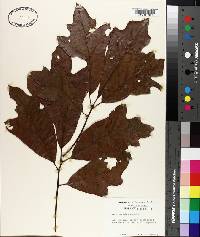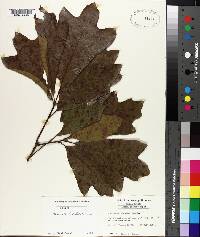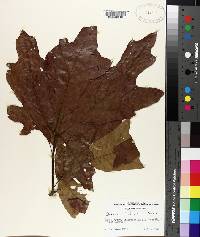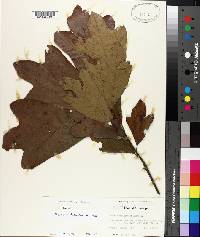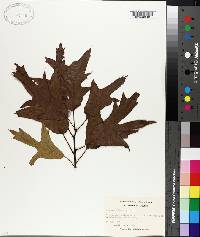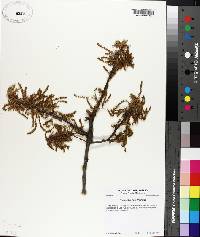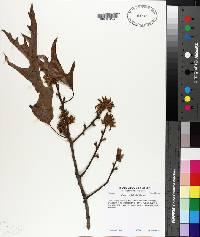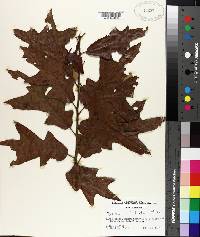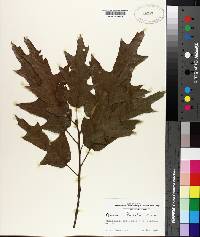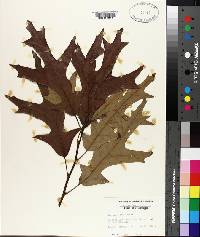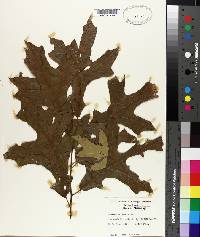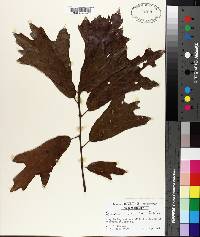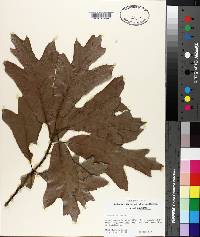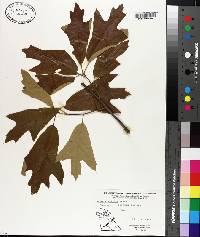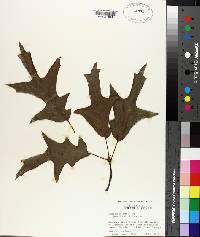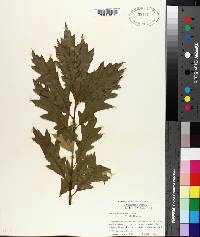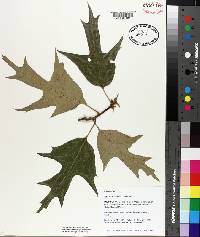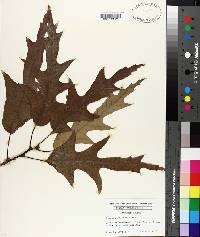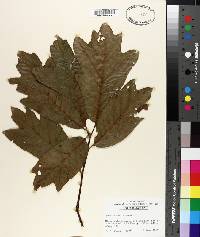Quercus falcata
|
|
|
|
Family: Fagaceae
Southern Red Oak
|
Trees , deciduous, to 30 m. Bark dark brown to black, narrowly fissured with scaly ridges, inner bark orange. Twigs reddish brown, (1-)1.5-3.5(-4.5) mm diam., pubescent. Terminal buds light reddish brown, ovoid, 4-8 mm, puberulent throughout. Leaves: petiole 20-60 mm, glabrous to sparsely pubescent. Leaf blade ovate to elliptic or obovate, 100-300 × 60-160 mm, base rounded or U-shaped, margins with 3-7 deep lobes and 6-20 awns, terminal lobe often long-acuminate, much longer than lateral lobes, apex acute; surfaces abaxially sparsely to uniformly tawny-pubescent, adaxially glossy and glabrous or puberulent along midrib, secondary veins raised on both surfaces. Acorns biennial; cup saucer-shaped to cup-shaped, 3-7 mm high × 9-18 mm wide, covering 1/3-1/2 nut, outer surface puberulent, inner surface pubescent, scale tips tightly appressed, acute; nut subglobose, 9-16 × 8-15 mm, often striate, puberulent, scar diam. 5-10 mm. Flowering spring. Dry or sandy upland sites; 0-800 m; Ala., Ark., Del., D.C., Fla., Ga., Ill., Ind., Ky., La., Md., Miss., Mo., N.J., N.Y., N.C., Ohio, Okla., Pa., S.C., Tenn., Tex., Va., W.Va. Native Americans used Quercus falcata in various ways to treat indigestion, chronic dysentery, sores, chapped skin, chills and fevers, lost voice, asthma, milky urine, and as an antiseptic, a tonic, and an emetic (D. E. Moerman 1986). Quercus falcata reportedly hybridizes with Q . ilicifolia (= Q . × caesariensis Moldenke), Q . imbricaria , Q . incana , Q . laevis , Q . laurifolia (= Q . × beaumontiana Sargent), and Q . marilandica (E. J. Palmer 1948); with Q . nigra , and Q . pagoda (S. A. Ware 1967; R. J. Jensen 1989); and with Q . phellos , Q . shumardii , Q . hemisphaerica , and Q . velutina .
Large tree, to 30 m; bark dark, thick, the rough ridges separated by deep, narrow furrows; twigs of the season persistently pubescent; lvs highly variable, commonly with 1-4 pairs of lateral lobes, these and especially the terminal lobe elongate, 2-5 times as long as wide, the lateral ones rather narrowly triangular and long-tapering, the terminal one more oblong and tending to be somewhat falcate; lvs persistently cinereous-tomentose beneath and on the long (2-5 cm) petiole; acorns 1-1.5 cm, about a third covered by the deeply saucer-shaped cup. Dry or sandy soil in the e., more often in wet soil in the w.; N.J. and sw. Pa. to Fla. and Tex., chiefly on the coastal plain, n. in the interior to O., Ind., and Mo. (Q. rubra, misapplied; Q. triloba) Gleason, Henry A. & Cronquist, Arthur J. 1991. Manual of vascular plants of northeastern United States and adjacent Canada. lxxv + 910 pp. ©The New York Botanical Garden. All rights reserved. Used by permission. From Flora of Indiana (1940) by Charles C. Deam All of our forms are shown on one map. The leaves of this species are extremely variable and this fact has led authors to divide it into two species and several forms. Trelease (The American oaks. Mem. Nat. Acad. Sci. 20: 201. 1924) recognized 14 forms of this species. For the benefit of those who wish to try to separate the species into groups I am giving a brief key for a few of the forms that occur in Indiana. In 1910, for four days I followed timber cutters who were making ties in Posey County. They favored me by cutting trees of this species which I had marked. This gave me the opportunity to study the leaves of the trees from the bottom to the top. This study convinced me that the species is polymorphic as to leaf form. I have found no difference in the fruit of the many forms. It is true that the three-lobed form (f. triloba) is the prevailing form on high ground and on sandy ridges. This oak is restricted to the southern part of the state. In Clark and Jefferson Counties it is locally frequent in the "flats" where it is usually associated with beech, sweet gum, and black gum. In Harrison and Washington Counties I found it on high ground associated with black and post oaks. In the western part of Gibson and Posey Counties it becomes frequent and it is associated with the low ground oaks and hickories. It is to be noted that all of the coppice shoots of Quercus falcata I have ever seen have[the] obovate, 3-lobed leaves [of f. triloba]. …… Indiana Coefficient of Conservatism: C = 5 Wetland Indicator Status: FACU Deam (1932): wood and uses similar to that of red oak. In Indiana it is all sold as red oak. In all parts of Indiana it is known as red or black oak. The bark of this species varies considerably in color and tightness. The leaves on the same tree will vary from 3-lobed to 11-lobed. Usually the lobing is deepest in the leaves nearest the top of the tree. Leaves of small trees, coppice shoots, and of the lower brances of some trees are often all or for the greater part 3-lobed. The color of the pubescence of the lower surface of the leaves varies from gray to yellow-gray. |

